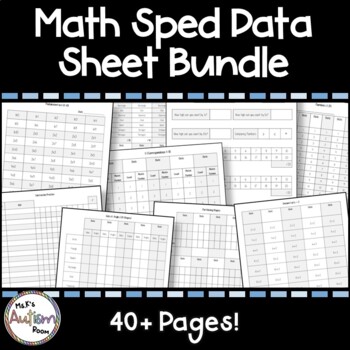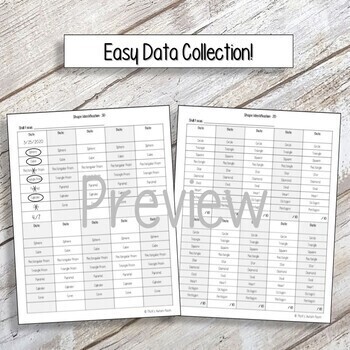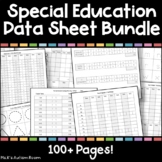Math Special Education Data Sheet Bundle (Number ID, Counting, Equations & More)
- Zip
What educators are saying
Products in this Bundle (3)
Also included in
- This Bundle includes 100+ different non-editable Special Education data sheets that can be used in person or for distance learning! These Sped data tracking forms are perfect for IEP Goals. DTT, behavior, skills assessments, tracing, tracing datasheets, behavior, behavior graphing, sight words, phonPrice $9.50Original Price $15.50Save $6.00
- Perfect for IEP goal assessment & data tracking! Letters, numbers, shapes, matching, tracing practice sheets, tracing datasheets, sight words, phonics skills, comprehension, basic operations, and more! The light grey coloring on every other box makes it easy to read and take data on. There are aPrice $6.00Original Price $9.00Save $3.00
Description
IEP goal assessment & data tracking in Special Education that can be used in the classroom or given to parents for virtual learning! Number identification, shapes, addition, subtraction, multiplication, division, 1:1 correspondence, greater than/less than & more! The light grey coloring on every other box makes it easy to read and take data on. There are also "how to" pages in each data sheet set.
**This is a forever growing bundle**
This pack includes 40 different non-editable Math Special Education data sheets!
This bundle ONLY includes my Math data sheet packs- check out my Ultimate Special Education Data Sheet Bundle for all Math & ELA data sheets plus behavior tracking, functional skills, and student binder data sheets!
Numbers & Patterning
-Numbers & Patterning Skills Inventory
-Numbers 1-10
-Numbers 1-20
-Numbers 1-50
-Numbers 1-100
-Counting by 5s
-Counting by 10s
-Counting Objects 1-10
-Counting Objects 1-20
-1:1 Correspondence 1-10 (count & match number)
-1:1 Correspondence 1-20 (count & match number)
-Greater Than, Less Than, or Equal to
-Extending Patterns
-Building Patterns
Basic Operations
-Addition Practice (Any)
-Addition Facts (Single Digit)
-Addition Facts (0-10)
-Addition Facts (Individual Data Sheets- 0-10)
-Subtraction Practice (Any)
-Subtraction Facts (Single Digit)
-Subtraction Facts (0-10)
-Subtraction Facts (0-5)
-Subtraction Facts (6-10)
-Multiplication Practice (Any)
-Multiplication Facts (Single Digit)
-Multiplication Facts (0-10)
-Multiplication Facts (Individual Data Sheets 0-10)
-Division Practice (Any)
-Division (÷2)
-Division (÷5)
-Division (÷10)
Shapes/Geometry (Added 4/16/2020)
-Shape Identification- 2D
-Shape Identification- 3D
-Sort Shapes (Field of 2)
-Sort Shapes (Field of 3)
-Sort or Identify 2D/3D Shapes
-Sides & Angles (2D Shapes)
-Faces, Edges, & Vertices (3D Shapes)
-Sort Shapes by Feature
-Partitioning Shapes
This product is for individual use only- no resale.







